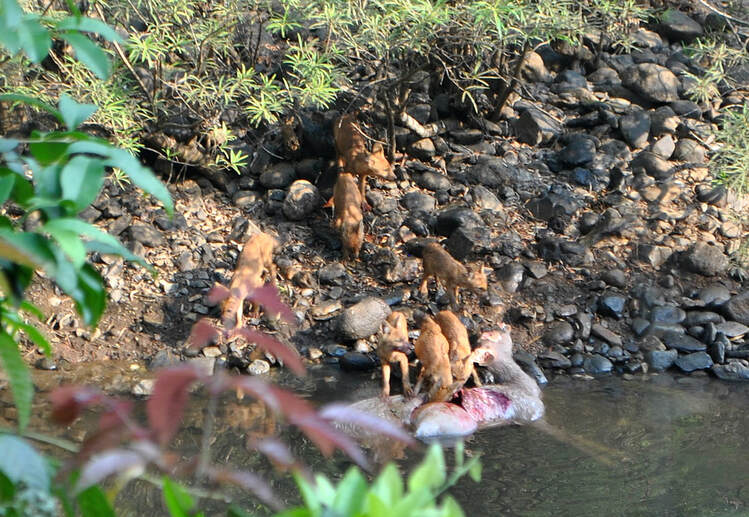|
Akshata Karnik Brimming with biodiversity, the Western Ghats have fascinated me for the longest time. When I had the opportunity to work in this landscape, I took it up without giving it a second thought. In January 2016, I found myself travelling to Hewale, a small village nestled in the Western Ghats in southern Maharashtra. I was working on the habitat use of dholes in this mosaic landscape of tropical forest, agriculture and plantations (cashew, rubber, banana among others). I would walk along trails and note down signs of dholes, their prey species– sambar and barking deer, and livestock. On most days my surveys looked like this- walk, walk, walk and more walk, and then utter delight at finding a dhole scat or a pugmark. On other days, it was just tramping without much luck in finding any dhole signs. For a researcher studying shy and elusive canids such as dholes, patience is key for a reward of fresh steaming smelly poop! It was almost the end of my field surveys and I had been sulking over the fact that I hadn’t directly sighted dholes as yet. Luckily, this spell was broken one fine morning, while on a survey close to the Tillari river. The trail was lined with bamboo along either side. Kusum trees (Schleichera oleosa) added a splash of red to the otherwise green patch. The earthy smell of the forest hung in the air. Narayan Kaka, our field assistant, walked ahead of us to scout the place. Excitedly, he signalled us to come ahead near the river. Across the river, on a rock, lay a freshly hunted sambar deer. Two adult dholes were busy feeding on it. Aware and a little wary of our presence, they kept an eye on us while still eating. In a couple of minutes, a little dhole pup walked out of the nearby bushes. We were excited and my heart was racing. But what followed stunned us even further. One by one, out came six more little ones– in front of us was a pack of nine dholes devouring the sambar. We sat there for a good half hour watching these incredible animals. Later on, we learned that the sambar kill had been taken away by some villagers. This disheartened me. It was then that I realised how the survival of such species is intricately dependent on the goodwill of local communities. In such human dominated landscapes, the persistence of endangered carnivores also depends on how people perceive these carnivores who share space with them. There is a need for many of us researchers to create a better image of these species in the minds of local communities. My research gave some hope, as I found dhole signs in abandoned agricultural lands and horticulture plantations. It was interesting to find that plantations embedded within forests also served as habitats for the species. Although my findings are very preliminary, they do shed some light on how plantation areas can be made more wildlife-friendly.
2 Comments
|

 RSS Feed
RSS Feed
